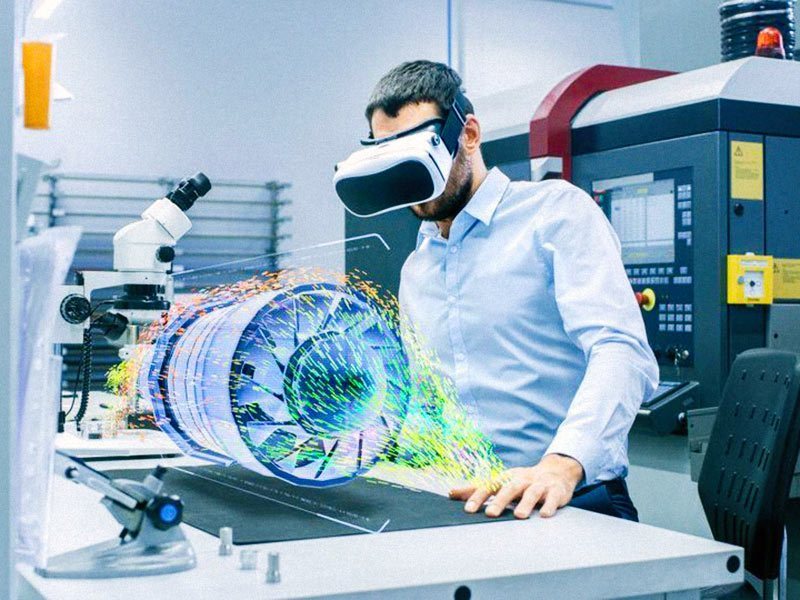In the construction industry, Virtual Reality (VR) helps both designers and homeowners. For example, YIT in Slovakia offers its clients the opportunity to use this technology to look at the details of future housing.
Everyone is talking about virtual reality all of a sudden, everywhere. This technology allows the user to move into a virtual environment, usually with the help of special glasses. A couple of years ago, VR devices from several manufacturers appeared on the market and can be purchased at reasonable prices.
VR is no longer tomorrow for us. This is a modern technology, actively penetrating into modern life. According to forecasts, in the coming years VR will transform games, training and human communication, replacing smartphones.
Virtual reality also benefits business and professional activity. For example, architects have the opportunity to design virtual structures in real size.
Glasses of a virtual reality, probably, in the near future become the standard tool of the technical personnel. This will simplify the installation and maintenance of equipment, because smart glasses will be able to highlight and brightly illuminate the details and provide work instructions projected in the field of view of the user.
Maintenance information and data can then be logged in a virtual maintenance log, where data from various sensors, such as people flow and indoor temperatures, are continuously uploaded.
“In Finland, the staff is highly qualified and competent, and the people here are very active in order to be among the first to learn how to apply VR in business and achieve a competitive advantage through this technology,” says Santto Parikka, Executive Creative Director of VR and AR (Augmented Reality) at Fake.
YIT is also confident in the rapid diffusion of VR technology in the coming years, as well as in its high potential for the construction industry. In addition to architects, designers and builders, virtual reality will offer significant advantages to the home buyer.
Apartments under construction today are mainly visualized through layouts and conceptual drawings, but we leave too much work to the imagination of our customers.

VR glasses will allow customers to walk through their future homes and see with their own eyes how rooms, walls, floors, ceilings and views from windows will actually look.
JIT already uses VR in Slovakia
YIT uses VR technology in Slovakia, where in early December 2016 the company introduced an application for travel to the world of virtual reality along with 3D-models, which are shown on the computer screen.
“We developed and tested several different solutions and providers before we started offering this service to our customers. Technology development has now reached a point where we can be proud of our service and it is cost effective,” says Renata Zatkova, Director of Marketing at JIT Slovakia.
Other construction companies in Slovakia also provide people with the opportunity to test virtual reality through special events. However, JIT is one of the few companies to offer this service in their sales offices.
The spread of VR among Finnish companies has so far been hindered by established habits and traditional work approaches, high costs and cumbersome devices.
These obstacles are now being removed. The headset, which used to cost hundreds of thousands of euros, is now available for a few hundred, the equipment that the user wears is light and compact, and the virtual world looks more and more real.
Almost all “advanced” companies in the construction industry, and other sectors of the economy, are now considering not whether or not to implement VR technology, but when to implement it in their activities. This requires a change in the way of thinking, as well as the digitalization of processes, which, of course, takes some time and is associated with costs.
“In Finland, the use of VR is most effective when designing hospitals to make them more comfortable and comfortable.
It is logical that it is better to get feedback from future “users” of the building during the design phase than during construction. The technology helps to prevent design errors, which saves a lot of money,” explains Santto Paricca.
The YIT Group is also investigating the extent to which VR can help buyers understand what an apartment under construction might ultimately look like, and whether this technology can help sales teams if they complement existing building materials.
In Russia, YIT is still taking its first steps in using the new technology in its work. In Kazan, we offer our clients the opportunity to download the mobile application “Green”. It uses augmented reality technologies.
Virtual model of the residential complex allows you to look into the apartments and evaluate the advantages of the layouts. There are several ways of working with the application:
- Find an image of the “Green” LCD with the AR sign in a printed booklet, put it in front of you, then point the camera at the image and zoom in on it,
- to activate the 3D mode.

